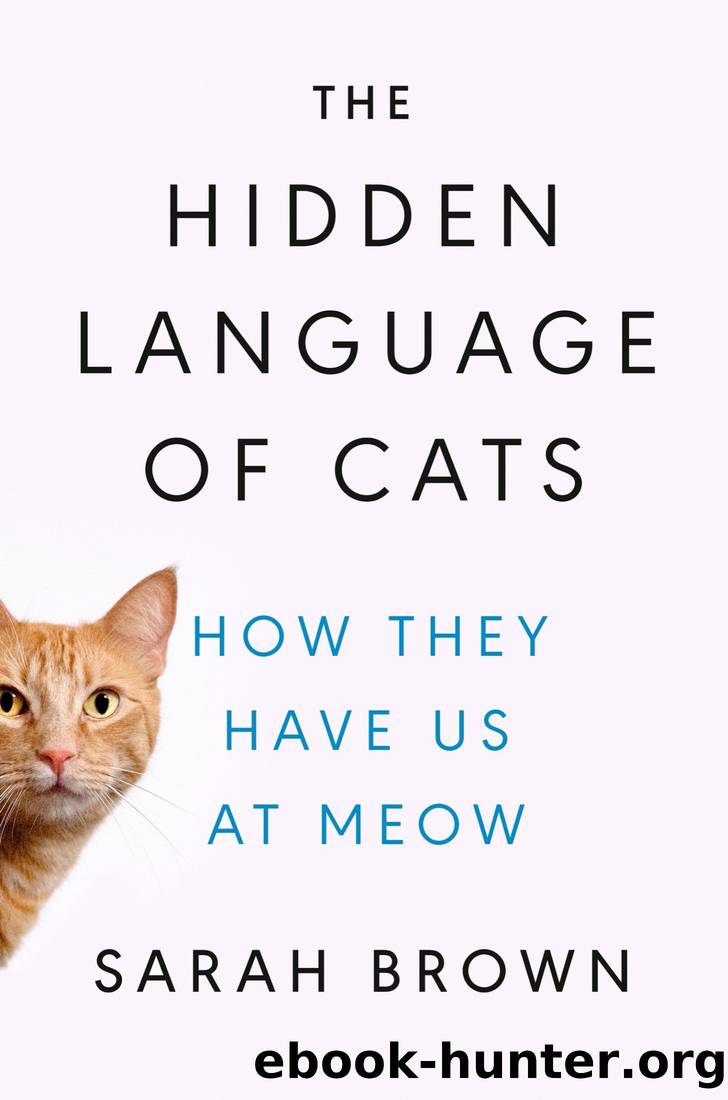The Hidden Language of Cats by Sarah Brown PhD

Author:Sarah Brown, PhD [Brown, Sarah]
Language: eng
Format: epub
Publisher: Penguin Publishing Group
Published: 2023-10-17T00:00:00+00:00
An important factor for a predator waiting for hidden prey to reappear, and perhaps even more crucial for the prey, is how long the predator can remember where they last saw their hoped-for prize. Known as working memory, this time varies greatly between species. Fortunately for a mouse hiding from a cat, it doesnât have to hold out for too long before the cat forgets about it. Experiments have suggested that over the first thirty seconds after an object disappears from view, a catâs ability to remember the objectâs location wanes rapidly. After a minute, the catâs searching success is slightly better than random, which doesnât give them much hope of catching a lost mouse. Presumably, it must be more productive at this point to move on to finding a new, unsuspecting mouse rather than to waste more time looking for a mouse that knows the cat is there and is actively hiding from them.
Most modern-day pet cats are lucky enough not to have to rely on their memory and hunting prowess to survive. Meals are usually provided by their owners, and so when a cat is hungry, their visual attention will inevitably be focused on their owner and whether there is any food in the offing. Recent studies have begun to explore how much human influence might override the natural instincts of cats when it comes to searching for food.
When researcher Hitomi Chijiiwa and coworkers presented cats with a simple choice of two containers, one containing food and one without, they chose the one with food. No big surprise there, but it did show as a baseline that the cats would pick a container they knew had food inside. Other tests involved showing cats two containers, but this time there was a piece of food in each. In one test, after watching the experimenter remove and pretend to eat the food from one container, the cat was given the chance to approach and investigate whichever container they chose. In a second test using the same containers, the experimenter simply took the food from one container, held it up, and showed it to the cat before putting it back where they found it rather than âeatingâ the food. The cat then had the opportunity to approach the containers and again choose one.
The researchers were curious to discover whether the cats would assume that the container where food had been âeatenâ in the first experiment was now empty and choose to investigate the other one instead. And in the second experiment, they wondered what effect showing and replacing the food would have on catsâ subsequent choice. They found that in both experiments, the cats more often chose to investigate the container that the human had visited. However, they did this significantly more frequently when the food had been âshownâ rather than âeaten.â This implied that they had some idea that in the âeatingâ scenario the food might not be there anymore, but this knowledge was not always strong enough to overcome the influence of seeing the person handling the container.
Download
This site does not store any files on its server. We only index and link to content provided by other sites. Please contact the content providers to delete copyright contents if any and email us, we'll remove relevant links or contents immediately.
| Amphibians | Animal Behavior & Communication |
| Animal Psychology | Ichthyology |
| Invertebrates | Mammals |
| Ornithology | Primatology |
| Reptiles |
Sapiens: A Brief History of Humankind by Yuval Noah Harari(13079)
The Tidewater Tales by John Barth(12039)
Do No Harm Stories of Life, Death and Brain Surgery by Henry Marsh(6343)
Mastermind: How to Think Like Sherlock Holmes by Maria Konnikova(6255)
The Thirst by Nesbo Jo(5795)
Why We Sleep: Unlocking the Power of Sleep and Dreams by Matthew Walker(5660)
Sapiens by Yuval Noah Harari(4553)
Life 3.0: Being Human in the Age of Artificial Intelligence by Tegmark Max(4521)
The Longevity Diet by Valter Longo(4454)
The Rules Do Not Apply by Ariel Levy(3915)
The Immortal Life of Henrietta Lacks by Rebecca Skloot(3833)
The Body: A Guide for Occupants by Bill Bryson(3818)
Why We Sleep by Matthew Walker(3782)
Animal Frequency by Melissa Alvarez(3763)
Yoga Anatomy by Kaminoff Leslie(3713)
Barron's AP Biology by Goldberg M.S. Deborah T(3637)
The Hacking of the American Mind by Robert H. Lustig(3588)
All Creatures Great and Small by James Herriot(3528)
Yoga Anatomy by Leslie Kaminoff & Amy Matthews(3407)
